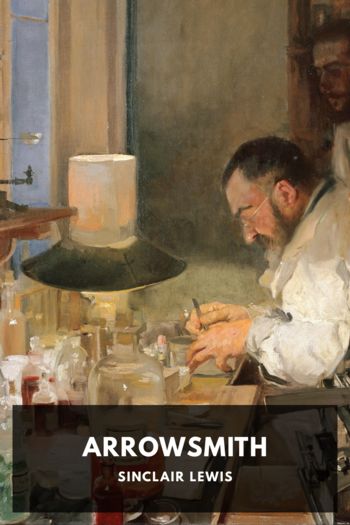Holocaust: The Nazi Persecution and Murder of the Jews, Peter Longerich [essential books to read TXT] 📗

- Author: Peter Longerich
Book online «Holocaust: The Nazi Persecution and Murder of the Jews, Peter Longerich [essential books to read TXT] 📗». Author Peter Longerich
interdepartmental meeting held two days later at Schacht’s invitation was to show.
Segregation and Discrimination, 1935–7
59
At this meeting there was general agreement about the need to put a stop to the
violence and the infringements and to pass instead a series of anti-Jewish laws. In
line with the discussions that had been held for months, the ban on ‘racial
defilement’, restricted citizenship rights for Jews, and targeted economic measures
were at the forefront of the talks. 34
The anti-Jewish violence only began to recede in September 1935 after Frick had
circulated a decree which was dated 20 August but only reached some of the local
authorities in early September. In Hitler’s name, further ‘individual operations
against Jews’ were forbidden and infringements of this ban would result in the
perpetrators being treated as ‘agents provocateurs, rebels, and enemies of
the state’. 35 In addition, the Party also began to show its clear opposition to the
‘individual operations’—Himmler, for example, in an order of 16 August, 36 and the National Socialist Organization of Small Businesses in a statement on 17
August, 37 various of the Gauleiter towards the end of the month, 38 and Streicher in a series of mass meetings39—in order to convince the Party activists of the seriousness of the ban on ‘individual operations’, even though the process of
enlightenment took several months.
In August, in the run-up to the Party Conference the campaigns against the
Catholic Church and the ‘reactionary forces’ were scaled down. The decision to
step down the campaign against ‘political Catholicism’ and the Stahlhelm was
announced by Hitler on 17 August at a meeting of the official Party speakers in
Nuremberg, which was part of the preparations for the Party rally. 40
Shortly before the start of the rally the Nazi leadership had decided to call a
special meeting of the Reichstag in Nuremberg to pass a special ‘Flag Law’ and
have the swastika declared the only legitimate national flag. 41 On 13 September, after the Reich Party Conference had begun, the spontaneous decision was taken
to use the session of the Reichstag to pass the long-awaited ban on ‘racial
defilement’, which had already been drafted by civil servants. 42
On the evening of the same day the ‘Jewish expert’ of the Reich Ministry of the
Interior, Bernhard Lösener, was summoned to Nuremberg where, according to his
own report, he was told the following day by Pfundtner and Stuckart, both joint
State Secretaries for the Interior, that he had to have ready for proclamation at the
Party rally the day after a ‘Jewish Law’ that would regulate ‘mixed marriages’ and
sexual relations between Jews and non-Jewish Germans.
Lösener portrays graphically how the group of ministerial advisers spent that
Saturday producing several drafts of the law that were all sent back by Hitler, who
was heavily influenced by Gerhard Wagner, leader of the Reich doctors’ organ-
ization. The pressure on this group must have increased to an almost intolerable
level on the Saturday evening when Hitler suddenly demanded in addition a Reich
Citizenship Act or Reichsbürgergesetz by the following morning.
Some historians in the past have tended to interpret Lösener’s memoirs as a
vivid depiction of the largely improvised style of government that characterized
60
Racial Persecution, 1933–1939
the ‘Third Reich’, but they are quite evidently a document of self-justification.
Lösener caricatured the unusual circumstances in which the Nuremberg Laws
were finally formulated to distract attention from the fact that their substance
corresponded closely with what had been planned for months by the bureaucrats
in the ministries, and in a more general form from as early as 1933. 43
The Reich Citizenship Law eventually passed by the Reichstag put a definitive
end to the equality of citizenship enjoyed by Jews in the whole of Germany since
1871, but significantly hollowed out since 1933, by introducing a distinction
between ‘nationals’ (Staatsangehörige) and ‘citizens of the Reich’ (Reichsbürger).
‘Citizens of the Reich’, or in the words of the law ‘bearers of full political rights in
accordance with law’, were ‘those nationals of German or related blood who
demonstrate by their behaviour that they are willing and suitable to serve the
German People and Reich faithfully’. The law did not therefore make access to
‘citizenship of the Reich’ dependent solely on racial criteria but left room for
imposing political conditions for the acquisition of such citizenship. The rights of
a ‘citizen of the Reich’ were to be conferred by a ‘Certificate of Reich Citizenship’,
but more detailed criteria were never formally established. 44
The ‘Law for the Protection of German Blood and German Honour’ prohibited
marriages and extramarital sexual relations between ‘Jews and nationals of German or
related blood’. Jews were not permitted to employ female Aryan servants under 45 in
their households and were not permitted to raise the Reich flag or the national flag. 45
Hitler stated at the Party rally that the Blood Protection Law was ‘an attempt at
the legal settlement of a problem, which, if this proved a failure, would have to be
entrusted by law to the National Socialist Party for a definitive solution’ and this
made it perfectly clear that the street violence of the Party activists had only been
suspended and could at any point be resumed so as to continue escalating the
persecution of the Jews. 46
The reports on the public mood that focused on the reception of the two anti-
Jewish laws by the population at large offer a mixed picture. They contain
enthusiastic approval (especially amongst Party members), acceptance, indiffer-
ence, and rejection (above all in Catholic and socialist circles). The laws were
quietly accepted by the overwhelming majority of the people, but to a varied
extent, and this acceptance was noticeably often linked with the expectation that
the anti-Jewish ‘individual operations’ would henceforth cease. At the same time
some reservations were voiced about the racist ideology that lay at the root of the
laws’ conception. 47
On the other hand, however, the reports also show an increasing distance from
the Jewish minority and a lack of interest or indifference towards the fate of the
Jews. In particular the reports of the Social Democratic Party in exile make it plain
that the anti-Semitic propaganda was aiming for a deeper, more subtle effect: the
idea that there might be such a thing as a ‘Jewish question’ was beginning to gain
in resonance amongst the people, the working class included. 48
Segregation and Discrimination, 1935–7
61
The National Socialists’ attempts to restructure the





Comments (0)